Dyslexia, dyscalculia and dysgraphia
Dyslexia, dyscalculia, and dysgraphia are specific learning difficulties or differences that affect the way people read, write and work with numbers. Coordination, organisation and memory may also be affected.
These learning difficulties can occur together or alongside other learning differences such as ADHD, autism, developmental coordination disorder or anxiety.
Dyslexia, dyscalculia and dysgraphia are lifelong conditions that can impact learning, but with the right support, children and young people can thrive.
Dyslexia
Dyslexia is a life-long neurodevelopmental learning difference that mainly affects reading and spelling. It can also affect coordination, organisation and working memory.
Dyslexia is not linked to intelligence, but it can make learning more difficult. Children with dyslexia often have strengths in other areas like creativity or problem-solving. Dyslexia exists on a spectrum, and a person’s learning differences may range from mild to more severe.
Common signs of dyslexia
- Problems learning the names and sounds of letters
- Difficulty with phonics (connecting letters to sounds)
- Struggles with spelling, even with simple words
- Reading slowly or with effort
- Writing slowly or messily
- Noticeable gap between verbal and written skills
- Poor working memory (e.g. difficulty remembering instructions)
- Avoidance of reading or writing tasks
- Difficulty taking notes
- Difficulty organizing or expressing ideas in written work, even when they are very knowledgeable about a subject
- A family history of similar difficulties
The British Dyslexia Association produces detailed information about the signs of dyslexia at different ages: early years, primary and secondary school age. See:
Assessment for dyslexia
However, dyslexia can only be formally diagnosed through a diagnostic assessment carried out by an educational psychologist or specialist dyslexia teacher.
If you are worried your child is dyslexic, speak to their teacher or the school’s special educational needs co-ordinator (SENCO) in the first instance. Ask them about any interventions that have been tried already. If your child continues to struggle despite these interventions, you can ask for them to be referred for assessment by the local authority educational psychologist or another specialist in dyslexia. Schools are unlikely to refer a child for assessment for dyslexia before they are 7 years old.
Alternatively, you could approach an independent educational psychologist or another suitably qualified professional directly. If your child is over 7, the British Dyslexia Association can undertake a diagnostic assessment. You will need to pay for this type of assessment.
Diagnostic assessments can take time so schools and colleges should not wait for a formal diagnosis before putting additional support in place.
What can help?
- Specialist teaching using structured, phonics-based programs
- Audiobooks or text-to-speech software
- Assistive technology or apps – see Dyslexia and Technology | AbilityNet
- Visual teaching materials and homework
- Providing notes or key vocabulary ahead of time
- Encouraging confidence through strengths and interests
- Extra time in tests and exams
You can do a lot to support your child’s learning at home too. See the British Dyslexia Association advice for parents: How can I support my child? – British Dyslexia Association
Further information
- British Dyslexia Association (BDA) – Advice, assessments, helpline and resources
- NHS Dyslexia Overview – Information on signs, diagnosis and support
- Patoss – Professional association for teachers and assessors of students with specific learning difficulties
- Dyslexia Scotland – Empowering people with dyslexia to reach their full potential
- Dyslexia UK – free helpline, fee paying screening and assessments and online resources.
- Helping Your Child at Home – The Children’s Literacy Charity
- Help with specific learning difficulties and dyslexia– Brighton and Hove Literacy Support Service
- Dyslexia and Support for Literacy – East Sussex Local Offer
Dyscalculia
Dyscalculia is a specific and persistent learning difference that affects a person’s ability to understand and work with numbers. It often occurs alongside other learning differences including ADHD, dyslexia, developmental language disorder (DLD) and developmental coordination disorder (DCD or dyspraxia).
Common signs of dyscalculia
- Difficulties with maths that are persistent and have been there since a young age
- Lack of intuitive understanding of simple concepts such as bigger/smaller, more/less
- Difficulties with arithmetic, e.g. addition, subtraction, multiplication and division.
- Difficulties understanding maths concepts such as fractions and percentages
- Difficulty spotting or following sequences and patterns
- Difficulty learning times tables or remembering number facts
- Difficulties with maths, but not other subjects that do not involve numbers, e.g. English
- High levels of maths anxiety and frustration
For more information see: How to identify dyscalculia and maths learning difficulties – British Dyslexia Association
Assessment for dyscalculia
A formal diagnostic assessment can only be carried out by a qualified assessor. The British Dyslexia association recommends the assessor must be qualified to a level 7 in the assessment of dyscalculia and has AMBDA dyscalculia accreditation. See How can you get an assessment for dyscalculia and/or maths learning difficulties? – British Dyslexia Association
You can find out more about what a dyscalculia assessment involves here: The Benefits of Dyscalculia Screening and Diagnostic Assessments | Dyslexia UK
What can help?
- Teaching using visual aids, hands-on activities, and real-life examples
- Repetition and regular practice in small, manageable steps
- Access to maths support programs or personal tutoring
- Maths apps and games
- Focusing on building confidence and reducing anxiety
Further information
- Dyscalculia – British Dyslexia Association – online advice and assessments for dyscalculia
- British Dyslexia Association helpline for people with dyslexia and dyscalculia
- Dyscalculia Network – UK-based directory of tutors and assessors, plus information and webinars
- Dyslexia UK Free Resources | Dyscalculia information – Resources to support your child with dyscalculia
- Maths Explained (by Judy Hornigold) – Resources and support for learners with dyscalculia
- Video: Dyscalculia and me Iona Bain
- Emile Education – Games based learning tools tailored to children with maths difficulties
- National Numeracy Organisation – online advice including What is dyscalculia and What is maths anxiety?
Dysgraphia
Dysgraphia is a specific learning difficulty that affects a person’s ability to produce written language. People with dysgraphia struggle to recognise or decipher written words, or to convert the sounds of language (phonemes) into writing (graphemes). They may have difficulties with spelling or with putting thoughts on paper. As dysgraphia can affect spatial perception and working memory, they may also struggle to write neatly and consistently or at a regular speed.
Dysgraphia does not affect intelligence, and people with dysgraphia may have no problems with reading or communicating verbally.
Dysgraphia commonly occurs alongside other learning difficulties or differences including dyslexia, ADHD, autism or anxiety.
There is a common misperception that dysgraphia is a coordination difficulty that causes messy handwriting. In fact, persistent handwriting difficulties due to motor coordination issues are a characteristic of developmental coordination disorder (DCD), previously known as dyspraxia. Though the signs may look similar, the causes are different. In any case, it may be helpful to consider both conditions during any assessment. Read our page on Developmental Coordination Disorder for more information.
Dysgraphia can be very frustrating for children and young people and may affect their emotional wellbeing.
Common signs of dysgraphia
- Awkward or painful pencil grip and/or unusual positioning of the wrist/arm or body when writing
- Poorly formed individual letters and numbers
- Difficulty spacing letters and words correctly
- Struggles with capitalisation and punctuation
- Difficulty organising thoughts on paper
- Difficulty writing and thinking at the same time
- Slow or laboured writing
- Hand pain or fatigue when writing
- Jumbling words
- Trouble with planning written work
How is it diagnosed?
If your child is struggling with the writing process due to motor coordination issues, you could request an assessment for developmental coordination disorder (DCD). This assessment would be carried out by an occupational therapist.
What can help?
- Using a keyboard or voice-to-text software to reduce handwriting demands
- Occupational therapy to improve fine motor skills
- Allowing extra time for written tasks
- Breaking writing into smaller steps (e.g. planning, drafting, editing)
- Using graphic organisers such as mind maps to help structure ideas
- Use of a scribe
Further information
- Dyslexia UK – includes information on how to support people with dysgraphia.
- Dysgraphia support groups for parents on Facebook
(3) Dysgraphia Support Group for Parents UK | Facebook – public group is for anyone with an interest in dysgraphia
(3) Dysgraphia Support Group for Parents | Facebook – private group that provides a space for parents with dysgraphic children to offer support, ask questions, and seek advice from one another.
(3) Dyspraxia, Dyslexia, Dyscalculia & Dysgraphia Support (Uk) | Facebook – private online support group for adults or parents of children who have been diagnosed with either mild dyspraxia, dyslexia, dyscalculia or dysgraphia.





